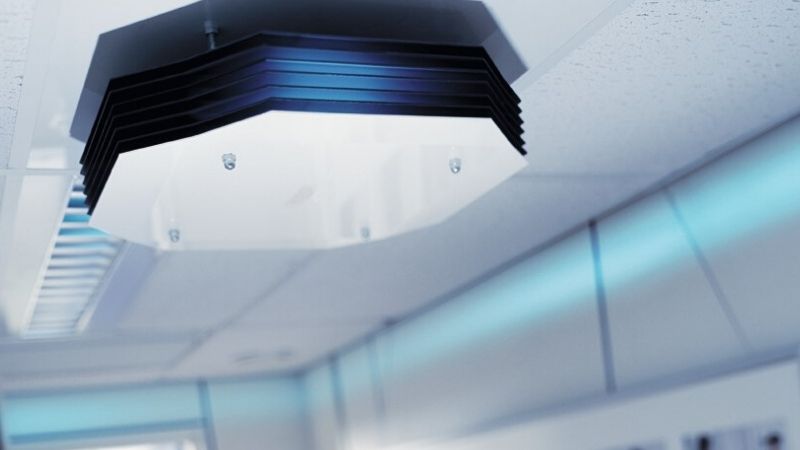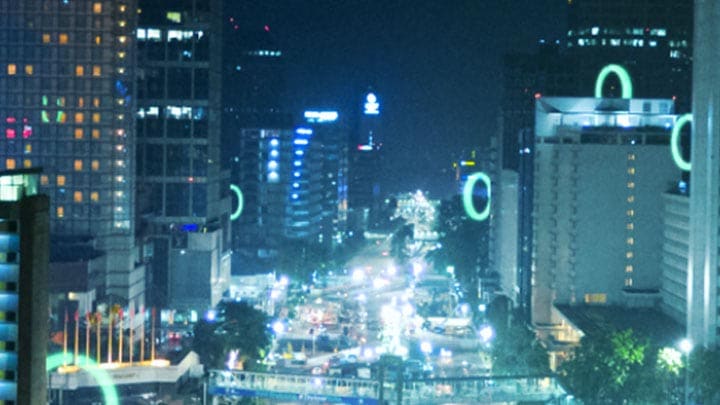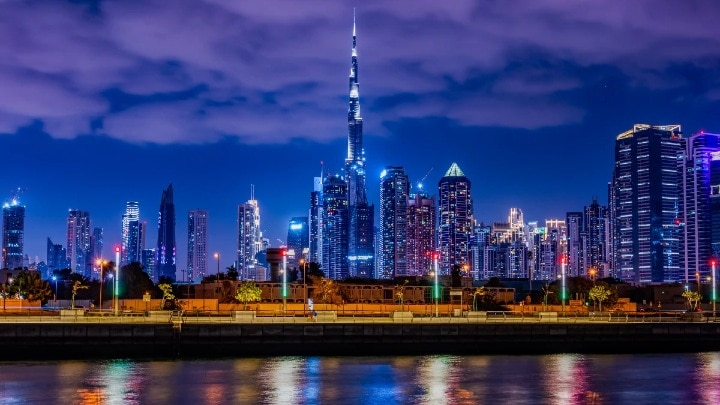July 23, 2020
UV-C lighting is a technology whose time has come
As countries start to come out of lockdown there’s renewed focus on ensuring that workplaces, facilities, and all manner of public transport are safe to use. As organizations grapple with this new reality, a tried and tested disinfectant, in the form of ultraviolet (UV) lighting, is garnering huge interest.
Signify is expanding its UV lighting offering. It is increasing its UV-C lighting capacity eight-fold and recently announced 12 new families of products and systems aimed at professional markets. But what exactly is UV lighting, how does it work and where can it be applied?
First, some science. UV light is that part of the electromagnetic spectrum that spans 100-400 nanometers (nm). Basically, it is divided into three different types, A, B and C.
UV-A and UV-B is found in sunlight. It’s what gives you a suntan or sunburn. UV-B is well known for medical applications such as the treatment of psoriasis and is also responsible for the formation of bone-strengthening vitamin D.
Then there’s UV-C, which is an invisible light, spanning the range of 100-280 nm, and has powerful germicidal properties.
UV-C from the sunlight is filtered out by the Earth’s atmosphere. We should be thankful for this as exposure to certain wavelengths of UV-C radiation is hazardous to the skin and eyes of humans and animals. Despite this, UV-C lighting, when designed properly, installed correctly with safety instructions followed, is a safe and highly effective form of disinfection.
Click on the image to see the full infographic.
Signify has been involved in UV-C lighting for more than 35 years. Our conventional Philips UV-C lamps have the same familiar shape as our well-known fluorescent tubes. Their peak wavelength of 254 nm is close to the 260-265 nm germicidal peak and proven to be extremely effective in breaking down the DNA (and RNA) of bacteria, viruses, fungi and mold spores, rendering them inactive and harmless.
For years, UV-C has been used to disinfect drinking water, wastewater, air, pharmaceutical products, and surfaces against a whole suite of pathogens. In fact, it has rendered inactive all bacteria and viruses tested to date (many hundreds over the years including coronaviruses).
Last June, Boston University validated our UV-C lighting as effective in inactivating SARS-CoV-2, the virus causing COVID-19. The team applied a dose of 5mJ/cm2, resulting in a reduction in the virus of 99% in 6 seconds. Based on the data, it was determined that a dose of 22mJ/cm2 will result in a reduction of 99.9999% in 25 seconds.
Signify’s new UV-C product range include battens, luminaries and carts for surface disinfection, air disinfection systems and a series of chambers for the speedy disinfection of objects and instruments.
Let’s take a look at the different forms of disinfection,
Disinfection of surfaces is performed through direct exposure to the UV-C radiation from lamps, luminaires or disinfection carts that are activated when people are not present. They can be brought into a workplace or bus or train when people have left. An extra level of safety may be provided by remote on-off switches and sensors which can shutdown systems if people or animals are detected.
Typical surface disinfection lamps are 55W and depending on the dose, disinfection can be done in seconds or a matter of minutes.
Of course, the light won’t be able to reach areas in shadow. So, for areas requiring deep disinfection it is recommended that UV-C forms part of a multi-barrier approach, alongside traditional scrubbing and cleaning with chemical disinfectants. Where UV-C scores highly is that it saves on time, requires few to no people and no chemicals. Surface disinfection lends itself to high contact areas such as offices, schools, restrooms and gyms.
For surface disinfection of small objects, such as mobile phones, laptops and wallets, a new range of chambers will be introduced. These draw on our experience with the Once BioShift germicidal chamber. The latter looks like an industrial microwave oven and was conceived for biosecurity in the agri-business sector. At the press of a button, items placed inside the chamber are disinfected in just five minutes. Such systems are safe to use with people in the room as the UV-C disinfection takes place in a contained and sealed chamber.


The COVID-19 pandemic has put UV-C lighting firmly into the spotlight. Demand for our lamps and drivers has skyrocketed with our factories working 24x7 to meet demand.
Going forward, the applications for UV-C are as huge as they are diverse. Let’s take a look at just one market, supermarkets.
Research has proven that shopping trolleys can harbor 361 times more bacteria than a bathroom doorknob1, while supermarket fridge doors can have 1,235 times more bacteria than the surface of your cell phone.

As shoppers browse the aisles, air disinfection systems can eradicate tiny airborne droplets, while lights fitted under check-out conveyer belts can disinfect them and remove unpleasant odors. And after closing, luminaire systems or wheelable carts could disinfect the store’s surfaces, whilst special UV-C tunnels disinfect shopping trolleys.
Today, companies and institutions are waking up to a new normal where germ and virus-free spaces are no longer ‘nice to haves’. UV-C lighting, which has been around for more than 40 years, is a well-tested, yet relatively unsung technology. It has taken a terrible pandemic for it to emerge out of the shadows. A technology whose time has surely come.
1Reusethisbag.com, an online retailer for reusable shopping bags, released the results of a study in which they surveyed the bacteria levels at more than 100 grocery stores of varying sizes and price levels in 10 states across America. The survey covered New York, California, Texas, Florida, and Maine.
Signify (Euronext: LIGHT) is the world leader in lighting for professionals, consumers and the Internet of Things. Our Philips products, Interact systems and data-enabled services, deliver business value and transform life in homes, buildings and public spaces. In 2023, we had sales of EUR 6.7 billion, approximately 32,000 employees and a presence in over 70 countries. We unlock the extraordinary potential of light for brighter lives and a better world. We have been in the Dow Jones Sustainability World Index since our IPO for seven consecutive years and have achieved the EcoVadis Platinum rating for four consecutive years, placing Signify in the top one percent of companies assessed. News from Signify can be found in the Newsroom, on X, LinkedIn and Instagram. Information for investors is located on the Investor Relations page.


December 17, 2024
Transforming Dubai’s iconic buildings with connected lighting from Signify